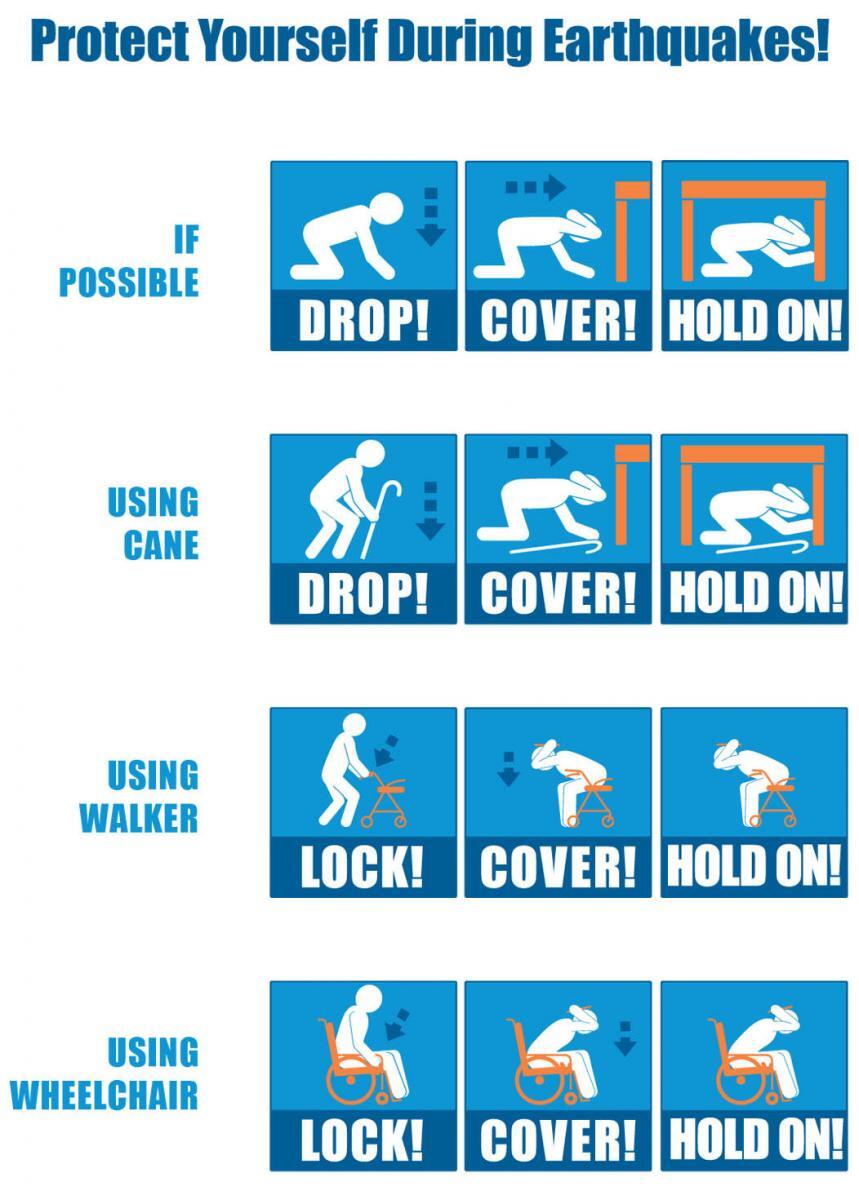WHAT TO DO IN CASE OF SIGNIFICANT EARTHQUAKE IN OUR AREA
With the frequency of reported earthquakes near us in recent months, we felt it prudent to publish the precautions and steps we should take if a larger quake was to ever rattle our county. Not to alarm anyone at all. There are hundreds of quakes every day around the world and several per day in the U.S.. It’s been a few years since a quake of a large scale has struck East Tennessee and even though there have been small ones that have occurred recently, there is no way to predict quakes. And the frequency of quakes does not necessarily indicate a large one is in our near future. Nevertheless, it would be a good idea to know what to do in case there is a significant quake to shake up our world. The following is taken from the government site ready.gov/earthquakes
Earthquakes
An earthquake is a sudden and rapid shaking of the ground caused by the shifting of rocks deep underneath the earth’s surface. Earthquakes can happen without warning and result in injuries and damage to property and roads. Earthquakes can cause fires, tsunamis, landslides, or avalanches. While they can happen anywhere, areas at higher risk for earthquakes include California, Oregon, Washington, Alaska, Hawaii, Puerto Rico, and the Mississippi Valley.
If an earthquake happens, protect yourself right away.
- If you are in a vehicle, pull over and stop. Set your parking brake.
- If you are in bed, turn face down and cover your head and neck with a pillow.
- If you are outdoors, stay outdoors away from buildings.
- Do not get in a doorway.
- Do not run outside.
Stay Safe During an Earthquake: Drop, Cover, and Hold On

Drop: Drop wherever you are on to your hands and knees. If you’re using a wheelchair or walker with a seat, make sure your wheels are locked and remain seated until the shaking stops.
Cover: Cover your head and neck with your arms. If a sturdy table or desk is nearby, crawl underneath it for shelter. If no shelter is nearby, crawl next to an interior wall (away from windows). Crawl only if you can reach better cover without going through an area with more debris. Stay on your knees or bent over to protect vital organs.
Hold on: If you are under a table or desk, hold on with one hand and be ready to move with it if it moves. If you can’t find a table or desk, cover your head and neck with both arms and hands. If seated and unable to drop to the floor, bend forward, cover your head with your arms, and hold on to your neck with both hands.
Prepare Before an Earthquake
The best time to prepare for any disaster is before it happens.
- Practice Drop, Cover, and Hold On with family and coworkers.
- Secure heavy items in your home like bookcases, refrigerators, televisions, and objects that hang on walls. Store heavy and breakable objects on low shelves.
- Create a family emergency communications plan that has an out-of-state contact. Plan where to meet if you get separated.
- Make a supply kit that includes enough food and water for at least three days, a flashlight, a fire extinguisher, and a whistle. Consider each person’s specific needs, including medication. Have extra batteries and charging devices for phones and other critical equipment. Do not forget the needs of pets and service animals.
- Consider obtaining an earthquake insurance policy. A standard homeowner’s insurance policy does not cover earthquake damage.
- Consider making improvements to your building to fix structural issues that could cause your building to collapse during an earthquake.
Keep Yourself Safe After an Earthquake
If an earthquake has just happened, there can be serious hazards such as damage to the building, leaking gas and water lines, or downed power lines.
- Expect aftershocks to follow the main shock of an earthquake.
- Check yourself to see if you are hurt and help others if you have training. Learn how to be the help until help arrives.
- If you are in a damaged building, go outside and quickly move away from the building. Do not enter damaged buildings.
- If you are trapped, protect your mouth, nose, and eyes from dust. Send a text, bang on a pipe or wall, or use a whistle instead of shouting to help rescuers locate you.
- If you are in an area that may experience tsunamis, go inland or to higher ground immediately after the shaking stops.
- Text messages may be more reliable than phone calls. Save phone calls for emergencies.
- Once you are safe, listen to local news reports for emergency information and instructions via battery operated radio, TV, social media, or from cell phone text alerts.
- Be careful during post-disaster cleanup of buildings and around debris. Do not attempt to remove heavy debris by yourself. Wear protective clothing, including a long-sleeved shirt, long pants, work gloves, and sturdy, thick-soled shoes during cleanup.
- Register on the American Red Cross “Safe and Well” website so people will know you are okay.



